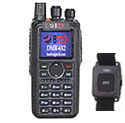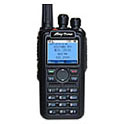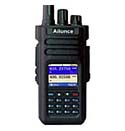|
Starter Code Plugs and Information for the New DMR User John 'Miklor' K3NXU |
Contents
These code plugs were are set up for local UHF repeaters in the York / Harrisburg, PA area. Some of the code plugs include a zone for the openSPOT which is set to 434.0MHz.
The openSPOT frequency of 434.0 would need to be changed to a UHF channel that does not interfere with local repeater link traffic. In the US, refer to either the ARRL Band Plan for an available frequency, or check with the local frequency coordination group for your region.
These are working examples only and to be used as guides. Any further modification or customization of these code plugs is up to you. I hope they assist on getting you started.
DMR Registration
For any of these code plugs to work on DMR, you MUST enter your DMR ID. Here is the link to DMR Registration.
| Anytone |
D578UV
(mobile) cps v1.06 |
| Anytone | D868UV |
| Anytone | D168UV Zone 0 |
| Anytone | D168UV Zone 7 |
| Anytone | D878UV |
| BTECH | DMR-6X2 |
| Baofeng | DM-1701 |
| Baofeng | DM-1702 |
| Baofeng | DM-1801 |
| Baofeng | DM-V1 |
| Connect Systems | CS-800D (mobile) |
| Connect Systems | CS-580 |
| Cotre | CO01D |
| Radioddity | GD-77 |
| Radtel | RT-27D |
| Radtel | RT-4D |
| Retevis / Ailunce | HD-1 |
| Retevis / Ailunce | RT-73 |
| TYT | MD-380 |
| TYT | MD-UV380 |
| TYT | MD-2017 |
| TYT | MD-9600 |
| TID | TD-9800 (mobile) |
| Yanton | DM-980 |
| Zastone | DP-880 |
| |
|
| Anytone
D578UV cps 1.06 So Central PA John KA3LAO |
So
Central PA Regional 1/31/2020 |
|
AnyTone
D868UV AnyTone D878UV BTech DMR-6X2 So Central PA Gary WA3CPO |
So
Central PA Regional 12-18-2021 |
When adding additional repeaters, be aware that not only do the frequencies change, but also the:
- Color Codes
- Time Slots
- Talk Groups
- Access (PTT or Full Time)
Repeaters do not all share the same configurations, and vary from one to another. A simple Cut and Paste will not work.
Color Code - This is the digital equivalent of a CTCSS tone.
FT = Full Time or Always ON (Static talk group). This talk group is always available for monitoring and access.
PTT = Requires a PTT to activate the Talk Group. (Dynamic talk group).
Talk Group must be activated by a user PTT and remains active for 5-15minutes after a local user keys the repeater.
3 Second Pause - Very important
Digital network signals have a Latency or "Digital Delay". It takes over a second for your audio to process through the global server network. Always allow 3 seconds between transmissions to allow someone to enter.
Local 2 - Calling Channel
Not for general "Rag Chewing". Calls are heard through a dozen repeaters in the local K4USD network.
After contact is made, it is suggested that long conversations be moved to a secondary Talk Group.
Local 9 - Your local repeater Only.
TAC 310 > 319 - Preferred National secondary channels.
Available on most repeaters and accessible through most repeaters and Brandmeister Hotspots.
Parrot / Echotest - TG 9998, TS 2
This is a network echo test that allows you transmit up to 90 seconds, and after a 5 second pause, will repeat back to you exactly what the network users hear.
Simplex Frequencies
In the South Central PA area, the simplex channels of choice are:
446.075 MHz - Primary Simplex
446.500 MHz - Secondary Simplex
446.075 MHz TG 99 TS 1 CC 1
446.500 MHz TG 99 TS 1 CC 1
Code Plug 1.01
|
|
|









